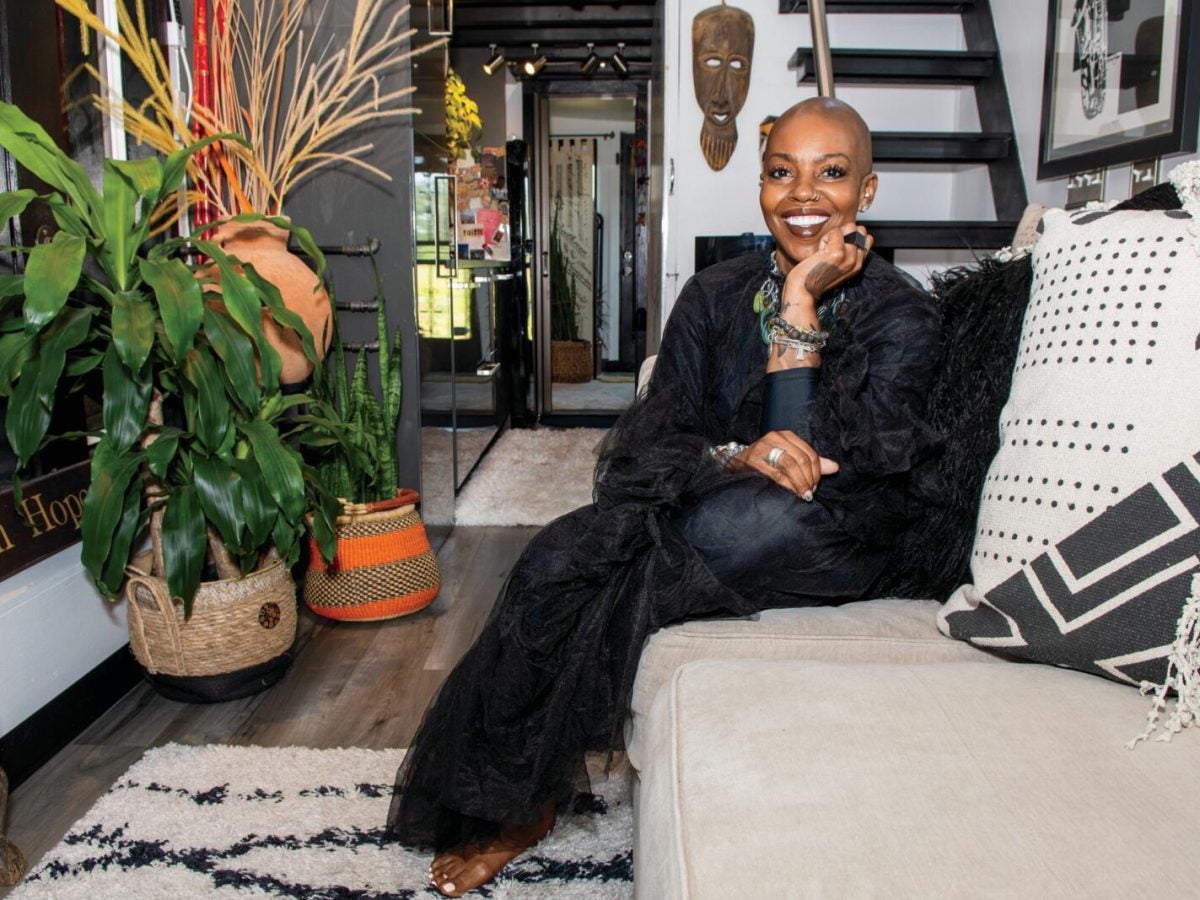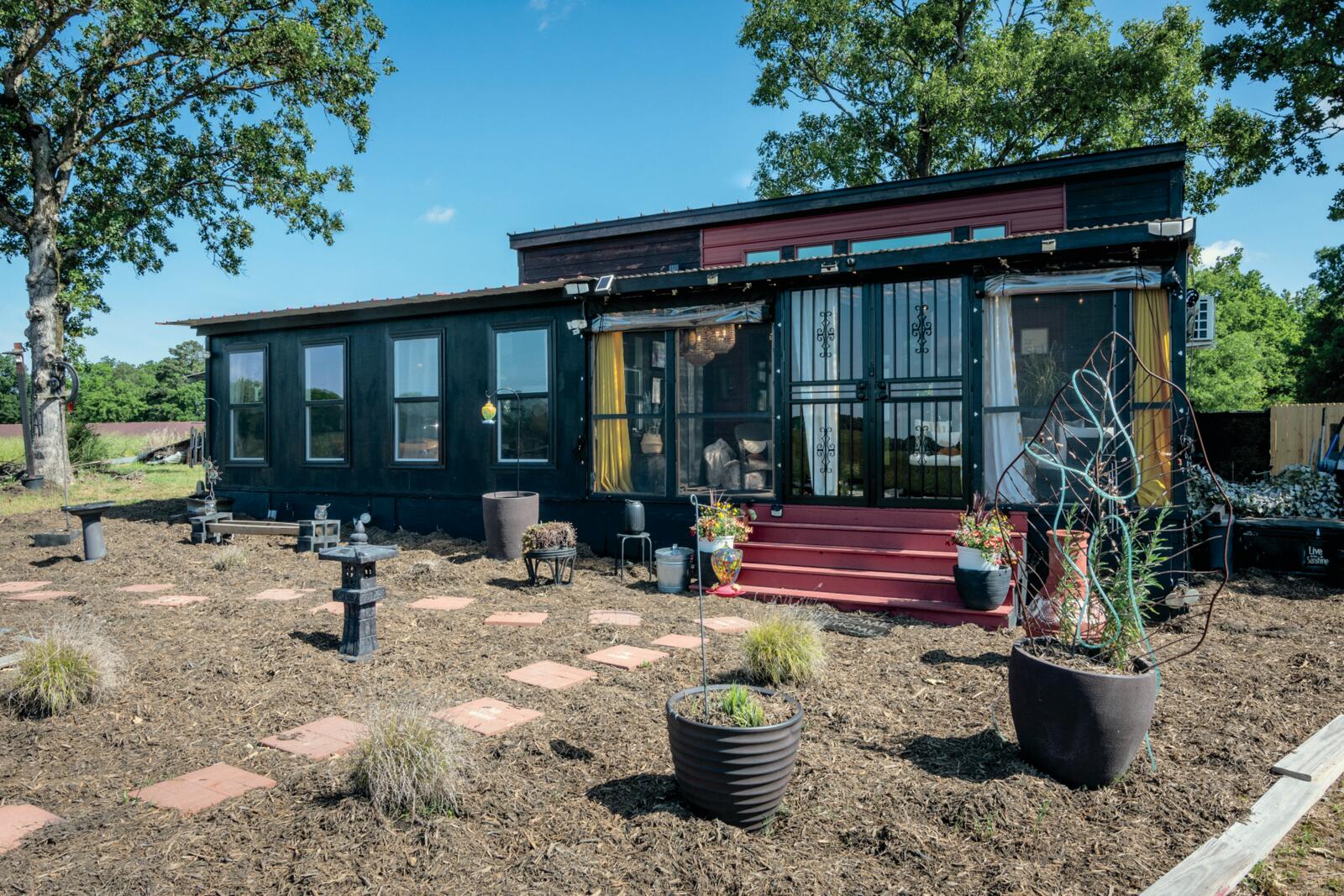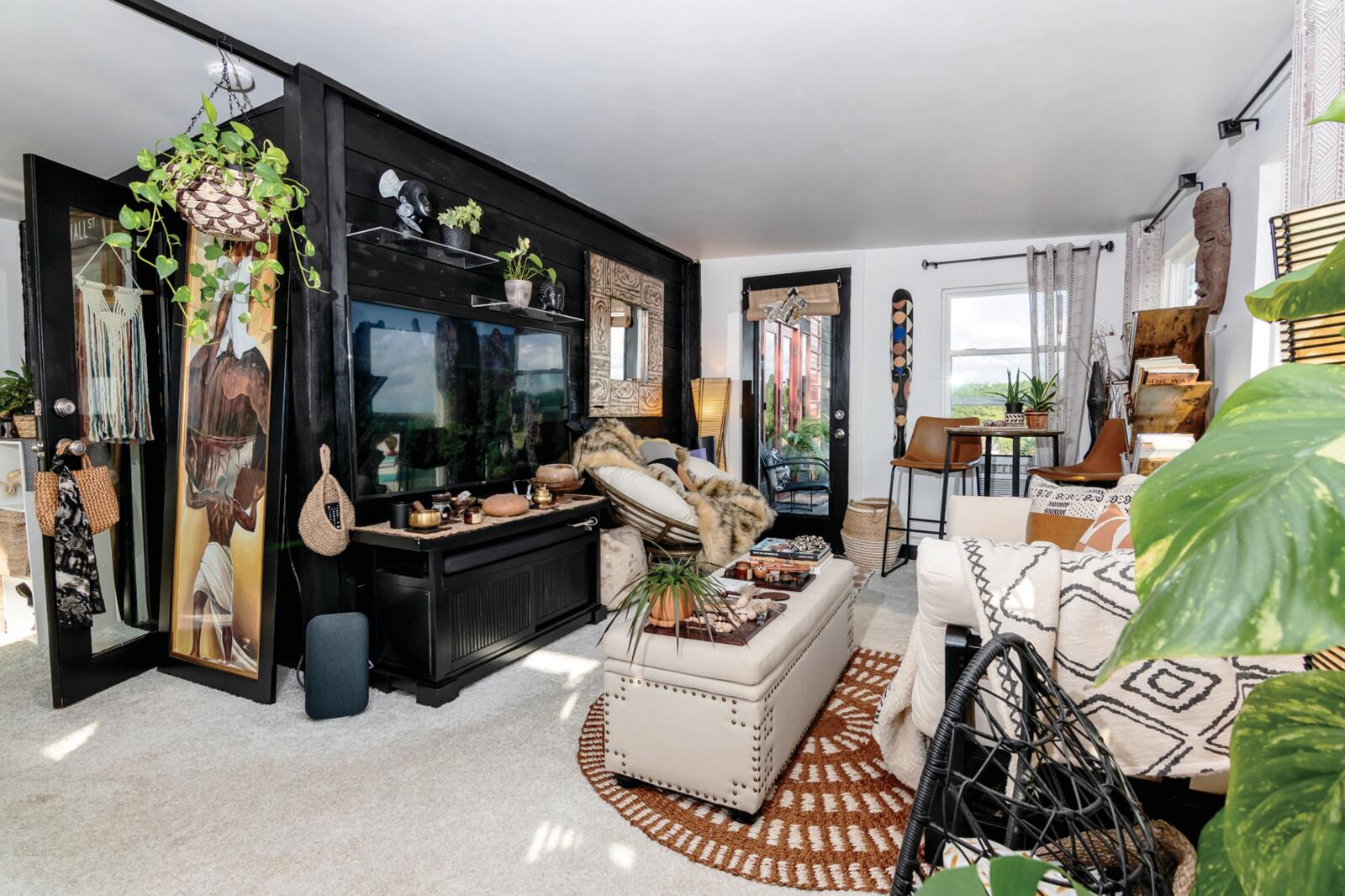
This story is featured in the July/August issue of ESSENCE, available on newsstands now.
Though aptly described as tiny, Jewel Pearson’s home is nothing short of grand. Resplendent in shades of black, white and red, the residence, located 45 minutes outside of Charlotte, North Carolina, includes panoramic windows that open to views of nature; a cozy office that doubles as a lounge; a galley kitchen; a full-size bathroom; and Afro-bohemian artwork throughout. Pearson has managed to create a dream home: an oasis designed to provide ease and restoration. This was always her goal.
Before she took the leap to build a tiny house, Pearson fantasized about living in a lighter, simpler way. Once her daughter went off to college in 2005, the single mother began to downsize, going from a four-bedroom, three-bathroom house to, eventually, a one-bedroom, one-bath apartment. She initially planned to take up residence in an RV; but in 2013, after stumbling across another woman’s abode, she found herself drawn to tiny-house living instead. “It made sense for me in the long term, because it was affordable,” she recalls. “This is how I can get to something really nice that kind of fits in the mode of an RV but has something more.”

In 2015, after the job she held at the time gave her an ultimatum to move to New York or take a severance package, she chose the latter. That became the catalyst for Pearson to focus, finally, on building the home she’d been pining for. Eight years later, what started out as a vision sketched on graph paper has not only blossomed into her 480-square-foot sanctuary, but it has gifted her with an untethered life centered on freedom and joy. “I wanted to feel free from struggle and hardship,” says the 55-year-old. “I wanted to live from desires and choices, and not just requirements.” Though her haven is a shining example of what tiny homes can be, Pearson’s passion for downsized living goes beyond aesthetics. “My work is the intersection of art and activism,” she says. “The art is my home, and my activism is for my community.”
Pearson is one of the first Black faces on the tiny-house scene, having been featured on HGTV. Known as Ms. Bohemian Soul to more than 40,000 subscribers on YouTube, she has used her platform to advocate for greater inclusivity in the growing movement. She pushes for solutions to issues that impact our communities, such as affordable housing and the racial homeownership gap. According to one study by the National Association of Realtors, while more Americans own homes now than a decade ago, Black Americans are last on the list of homeowners. They account for only 44 percent, compared with 72.7 percent of White, 62.8 percent of Asian and 50.6 percent of Hispanic-American owners.
And thanks to systemic mortgage discrimination, predatory lending and redlining practices, that gap is widening. “All of the things, all the tricks that have kept us out of homeownership before are still harming our communities, still not allowing our families to prosper,” says Pearson. “So I talk about tiny houses, because it’s a quicker path to homeownership.”








When Pearson searched for allies who shared her mission to tackle these disparities, she found herself hitting a wall. “The tiny-house movement is very White, very hipster,” she says. “Early on, when I thought the movement was about challenging the status quo of traditional housing, I said: We need to talk about the unhoused. We need to bring Black and Brown folks to the table, because they’ve been left out of the housing conversation. Many were extremely hostile and resistant to the idea.”
Upon realizing that her counterparts had no intention of including the people most challenged by access to traditional housing, she forged her own community focused on representation. Enter Conversations on Intimate Spaces, the YouTube series she created to encourage people of color to consider tiny-house living as a viable and smart option for the future. Whether you’re considering going tiny to travel across the country, living an eco-friendly lifestyle, using a tiny house as a “glamping” vacation home, or becoming an Airbnb host, Pearson says the opportunities, including the financial ones, are endless.
“Instead of paying three, four, five thousand dollars on a mortgage, build a tiny house for a fraction of that,” she says. “Then save the rest of it and invest. Or live in it for a few years, so that you’re able to stack that money and purchase a larger house outright. I see tiny-house living as an opportunity for nontraditional wealth-building. If we can’t get to wealth-building the same way our counterparts do, let’s start being creative with how we get there.”






